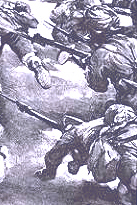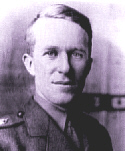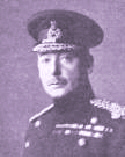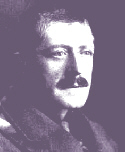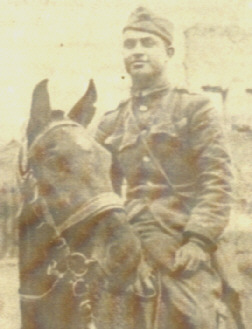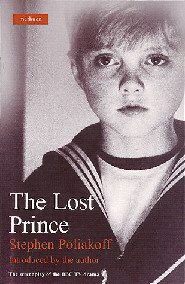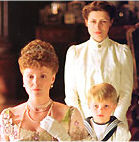
Third Anniversary Issue
November 2005 |
Access Archives |
TRENCH REPORT: With this issue of the Trip-Wire we begin our fourth year of publication. Thank you for your support. Over the years, I've been regularly asked how we have been able to provide a fresh stream of new material from issue to issue. The answer is twofold. First, the First World War is simply endlessly interesting. Second, the majority of the material published here either comes from you, the readers, or is pointed out by you. As I mentioned in an earlier issue, I've come to think of some of you as "Agents" who report in to the Trip-Wire command post regularly. . .Speaking of our Agents, they were especially industrious in October. David Beer says that there are hopes of a posthumous pardon for shell-shocked soldier who was executed during the war. (link). . .Barrister Bob Rudolph reports that the original copy of the Zimmerman Telegram has been found
(link). . .Len Shurtleff has discovered that personnel records of WWI US Veterans will soon become available to researchers under Freedom of Information guidelines.
(link). . .and a whole gaggle of you passed on the scientific news that the emerging bird flu shows similarities to the Spanish Influenza of 1918. (link)
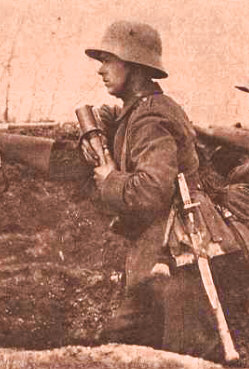
Stormtrooper 1918
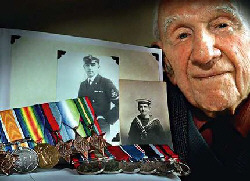 The last Australian to fight in World War I, William Evan Allan, from Victoria, has died at the age of 106. The former sailor, also the sole surviving Australian veteran of both world wars, was given a state funeral. Mr Allan, then aged 14, enlisted in the Royal Australian Navy as a boy sailor before the outbreak of World War I. (article) |
 As Great War veteran George Patton once said, "To be a successful soldier you must know history ..." What WWI books are America's warriors studying? Each of the service chiefs have a list of recommended readings for their troops. This month we feature the Chief of Naval Operations' suggestions that touch on WWI. 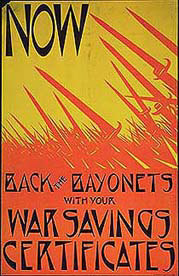
1. BAY STATE ALERT! The Harvard Film Archive in Cambridge is showing several WWI themed movies in November for a series called "In The Trenches". (link) 2. Member Dave Homsher is preparing to publish the first volume of his series of comprehensive guides to the battlefields of the AEF, The Battle of Chateau Thierry. Click on his cover below to visit his website and learn about Dave's book and his prepublication sales offer. 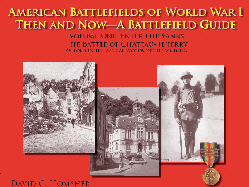 3. Member Scott Schoner, proprietor of the Digital Bookshelf, is offering a free one-day Armistice Day subscription to his database of 85,000 World War I American Casualties. Email Scott at scott@thedigitalbookshelf.com and he will send you the url and password to use on November 11th.  GlobalSecurity.org has shared these philological fun facts: The conflict that erupted in August 1914, and that ended at the 11th hour of the 11th day of the 11th month of 1918, was known at the time simply as the Great War. In the United States, it was officially designated The World War. On October 7, 1919, War Department General Orders No. 115 directed: "The war against the Central Powers of Europe, in which the United States has taken part, will hereafter be designated in all official communications and publications as 'The World War' ". . .The term "First World War" was used in 1920 by Lt-Col Repington, in his book The First World War 1914-18. The phrase "World War 2" was first noted in use in Manchester Guardian on 18 February 1919. It seems that World Wars I & II were named together for the first time by Time magazine on 11 September 1938.  AJP Taylor |
|||||||||||||||||
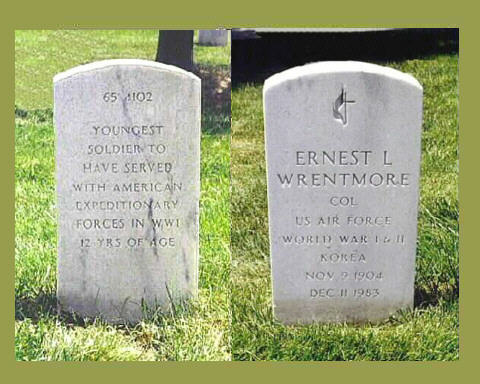 Marker at Arlington National Cemetery for Ernest Wrentmore, 60th Infantry, 5th Division | ||||||||||||||||||
After a while the Turks sent a party out to inquire as to their mission. It was explained that Col. Beach had a letter for Khalil (Khalil Pasha, the Turkish Commander) that had to be personally delivered. The Turks told them to wait while they decided what to do. The wait extended for several hours. Col. Beach finally agreed to turn over the letter if his party was taken to Khalil. The Turks agreed. The British were blindfolded and led through the lines, at one point on horseback. Lawrence had injured his knee and insisted on walking the whole way, which meant that he arrived at the meeting after his colleagues. While Col. Beach was the senior officer present, and thus the one responsible for whatever happened, the talks were held mostly in French, which Beach didn't understand, so Herbert did most of the talking with Lawrence in support.
The letter restated a former offer to pay £1,000,000 "for the civilians of Kut". Aubrey Herbert added £1,000,000 to this not knowing if he really had such authority (it later turned out that the government would have supported him). Khalil was not interested in the money, as he was the nephew of Enver, head of the Young Turks. What he wanted were river steamers to transport the prisoners to Baghdad. He promised to return them afterward. While Col. Beach knew that force-marching the prisoners would undoubtedly result in many deaths, he had no authority to accept this offer, as the British were short of river craft for their own purposes.
Sources and Notes: 1. Lawrence of Arabia (The Authorized Biography of T. E. Lawrence) by Jeremy Wilson, 1989, Atheneum; 2. T. E. Lawrence (Letters to His Biographers Robert Graves & Liddlell Hart) 1963, Cassell. Aubrey Nigel Henry Molyneux Herbert, M.P., (1880- September 26, 1923) was a British diplomat, traveller and intelligence officer, associated with Albanian independence. | ||||||||||||||||||
Zouave Valley lies at the western foot of Vimy Ridge. The valley runs between the villages of Souchez (to the left) and Neuville St. Vaast. It was named for the stubborn attacks of these French troops who reached this valley during their September, 1915 Artois offensive. Their remains still littered the battlefield when the British took over the sector in early 1916. 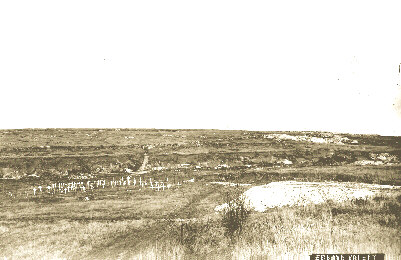 Zouave Valley - ThenIn the "Then" view, looking due east, the imposing height of Vimy Ridge is easily appreciated. In the left middle distance are visible the graves of the British Commonwealth "Zouave Valley Cemetery." The cemetery was begun in May 1916 and records 128 British, 93 Canadian, 8 South African, 4 Unknown and 1 German burials as well as 11 special memorials. The latter are for men known, or believed, to have been buried within the cemetery but whose graves could not be located after the war. Directly beyond the cemetery may be seen the pathway and entrance leading to one of the underground "subway" systems constructed by the Canadians prior to the April 9, 1917 attack. These tunnels allowed the safe assembly and movement of attacking troops up to the front lines and there were a number of them leading into the ridge from this valley. The origins of the white chalk mound in the right foreground is unknown but it may have been agricultural because mixing chalk with the topsoil remains a common farming practice in northern France. 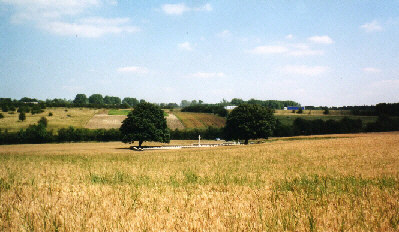 Zouave Valley Now |
||||||||||||||||||
After the war he returned to University and was elected while still a student to the State Legislature. During the House of Representatives session of 1921-1922 he sponsored bills creating the Indiana World War Memorial plaza and the American Legion National Headquarters in Indianapolis. He spent time in his career as a teacher, public relations consultant and editor. He returned to service in World War II and was director of public relations at Fort Benjamin Harrison, retiring from the Army Reserve as a Brigadier General. Alas, his otherwise distinguished career was marred by a three-month visit to the Indiana Penitentiary in 1961 for his involvement in a scandal over rights-of-way acquisitions for state roads. He died in 1979. |
||||||||||||||||||
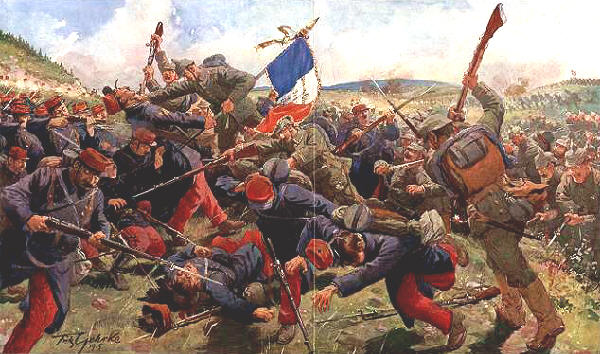
Western Front - 1914 | ||||||||||||||||||
| ||||||||||||||||||
| The following are thanked for their contributions to this issue of the Trip Wire: Anatole Sykley, Donna Cunningham, Larry Butler, Bob Rudolph, Anne Steele, Tony Langley, Matt Church, Andy Melomet, Sidney Clark, Len Shurtleff. The stout gentlemen of the shipyard guard detail were found at the National Archives. Until next month, your editor, Mike Hanlon. |
Membership Information  Click on Icon |
SUBSCRIBE TO THE TRIP-WIRE (Or Send it to a friend.) (Or send us a comment on the TRIP-WIRE) CLICK HERE TO CONTACT US VIA EMAIL |
For further information on the events of 1914-1918
visit the Directory Page of |

